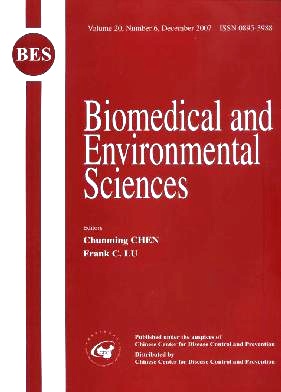Application of Benchmark Dose (BMD) in Estimating Biological Exposure Limit (BEL) to Cadmium
-
Key words:
- Benchmark dose /
- Biological exposure limit /
- Biomarker
Abstract: Objective To estimate the biological exposure limit (BEL) using benchmark dose (BMD) based on two sets of data from occupational epidemiology. Methods Cadmium-exposed workers were selected from a cadmium smelting factory and a zinc product factory. Doctors, nurses or shop assistants living in the same area served as a control group. Urinary cadmium (UCd) was used as an exposure biomarker and urinary β2-microgloburin (B2M), N-acetyl-β-D-glucosaminidase (NAG) and albumin (ALB) as effect biomarkers. All urine parameters were adjusted by urinary creatinine. Software of BMDS (Version 1.3.2, EPA.U.S.A) was used to calculate BMD. Results The cut-off point (abnormal values) was determined based on the upper limit of 95% of effect biomarkers in control group. There was a significant dose response relationship between the effect biomarkers (urinary B2M, NAG, and ALB) and exposure biomarker (UCd). BEL value was 5 μg/g creatinine for UB2M as an effect biomarker, consistent with the recommendation of WHO. BEL could be estimated by using the method of BMD. BEL value was 3 μg/g creatinine for UNAG as an effect biomarker. The more sensitive the used biomarker is, the more occupational population will be protected. Conclusion BMD can be used in estimating the biological exposure limit (BEL). UNAG is a sensitive biomarker for estimating BEL after cadmium exposure.
| Citation: | BO SHAO, TAI-YI JIN, XUN-WEI WU, QING-HU KONG, TING-TING YE. Application of Benchmark Dose (BMD) in Estimating Biological Exposure Limit (BEL) to Cadmium[J]. Biomedical and Environmental Sciences, 2007, 20(6): 460-464. |







 Quick Links
Quick Links
 DownLoad:
DownLoad: